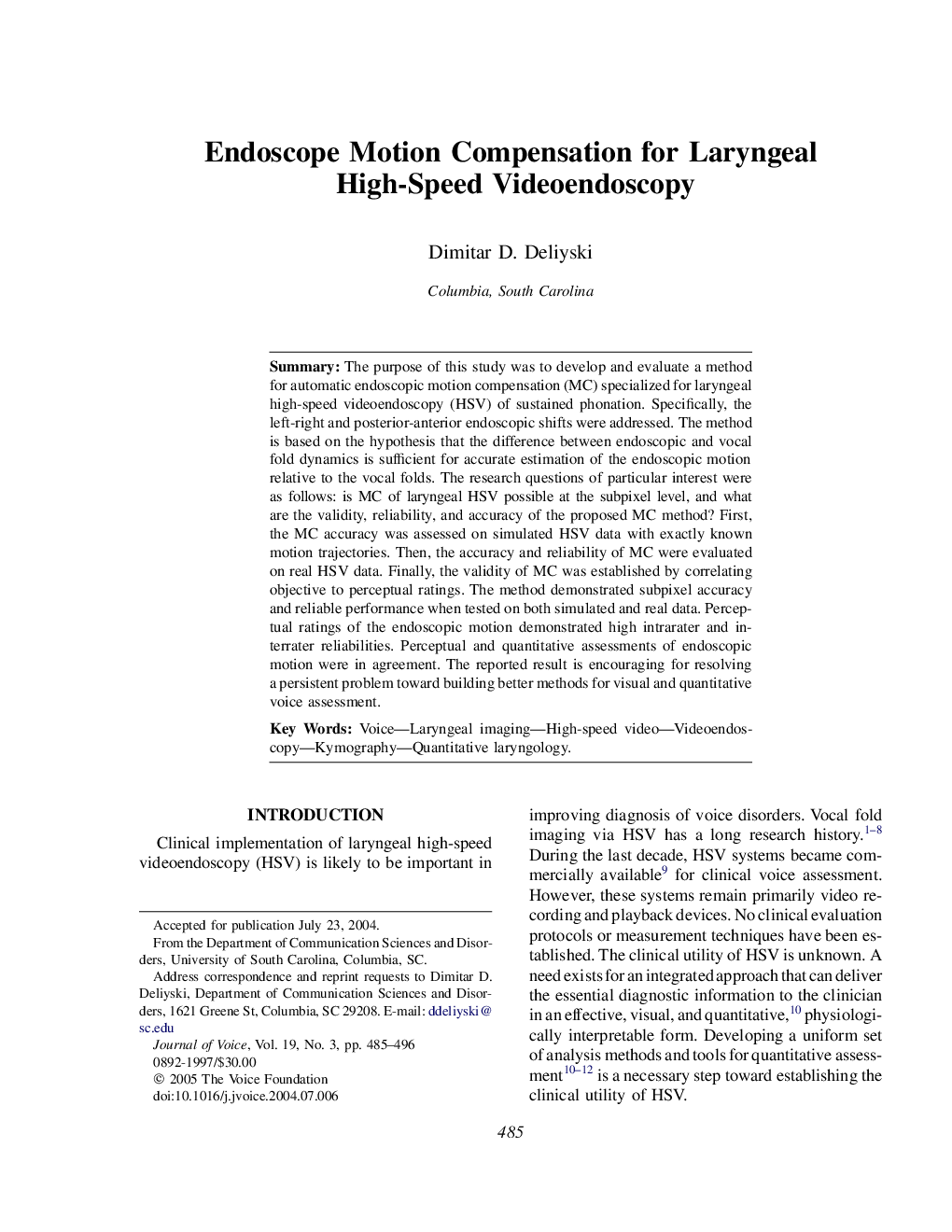| Article ID | Journal | Published Year | Pages | File Type |
|---|---|---|---|---|
| 10519733 | Journal of Voice | 2005 | 12 Pages |
Abstract
The purpose of this study was to develop and evaluate a method for automatic endoscopic motion compensation (MC) specialized for laryngeal high-speed videoendoscopy (HSV) of sustained phonation. Specifically, the left-right and posterior-anterior endoscopic shifts were addressed. The method is based on the hypothesis that the difference between endoscopic and vocal fold dynamics is sufficient for accurate estimation of the endoscopic motion relative to the vocal folds. The research questions of particular interest were as follows: is MC of laryngeal HSV possible at the subpixel level, and what are the validity, reliability, and accuracy of the proposed MC method? First, the MC accuracy was assessed on simulated HSV data with exactly known motion trajectories. Then, the accuracy and reliability of MC were evaluated on real HSV data. Finally, the validity of MC was established by correlating objective to perceptual ratings. The method demonstrated subpixel accuracy and reliable performance when tested on both simulated and real data. Perceptual ratings of the endoscopic motion demonstrated high intrarater and interrater reliabilities. Perceptual and quantitative assessments of endoscopic motion were in agreement. The reported result is encouraging for resolving a persistent problem toward building better methods for visual and quantitative voice assessment.
Related Topics
Health Sciences
Medicine and Dentistry
Otorhinolaryngology and Facial Plastic Surgery
Authors
Dimitar D. Deliyski,
